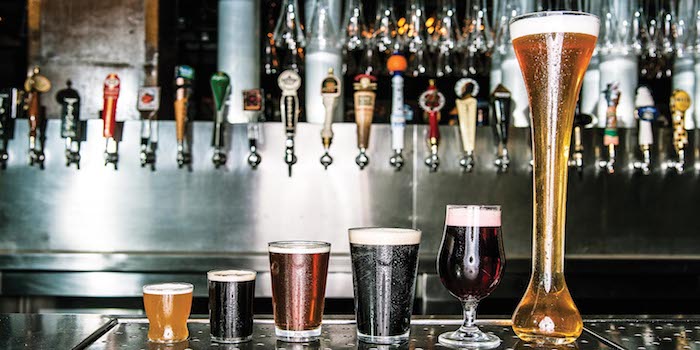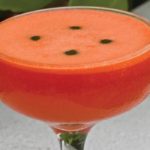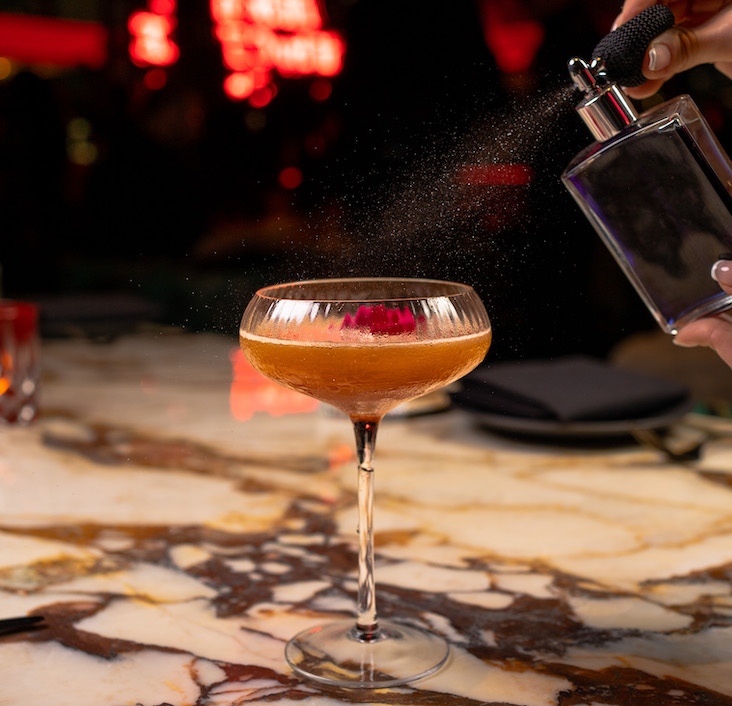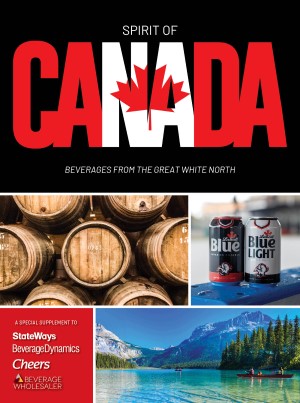Macro brands still rule when it comes to light beer. But this lead has somewhat receded with the rise of craft, which has diversified the category with a wide range of flavorful brews.
The three leading light domestic lagers continued to sell significant volumes in 2014. According to the Beverage Information and Insights Group, the research unit of Cheers’ parent company, Bud Light moved 522,661 cases last year, while Coors Light and Miller Lite sold 244,917 and 166,901 cases, respectively. Still, Bud Light sales were down 1.3% from 2013, Coors Light slipped 3.5%, and Miller Lite fell 1.6%.
“For a whole decade, light beer has been big breweries’ only saving grace,” explains Stephen Beaumont, co-author of The World Atlas of Beer and the new Pocket Beer Guide 2015. “But lately, it’s only one or two of them who have seen some growth. Everyone else is shrinking.”
The opposite is true for craft: Microbreweries are enjoying a boom period. And they’re increasingly expanding into lighter options such as pilsners, witbiers, Kölschs, and session beers.
“We’ve definitely seen a significant shift in the beer consumer marketplace,” Beaumont says. The craft beer market is still a small percentage of the overall beer market, he notes. “But it’s growing so rapidly that nobody can have accurate numbers. Nothing else is growing at that pace.”
Macro Matters
Whenever Yard House unveils a new location, it opens with “the big three: Bud Light, Coors Light and Miller Lite,” explains the beer-centric restaurant chain’s beverage manager Greg Howard.
With 110 to 120 tap handles per franchise, Yard House easily has room for macro lights. This sheer volume and variety also allows the business to see where big breweries fit into the larger beer category.
“Because there’s so much diversity in craft beer, there’s no one craft brewery that has cornered the market on any one style,” Howard says. “So every microbrewery ends up competing for the same customer.”
The light beer companies are not fighting for the same guest, however, he notes. “The people who drink a light beer tend to only drink that one light beer [brand]. Because of that, two of the three big three macro light beers actually took a step up in our sales last year,” Howard adds. “Suffice to say, all three are in our top-10, highest-selling beers.”
Yard House does not try to sway macro drinkers from what they already enjoy. “I think there is still brand loyalty. And we do train about this,” says Howard.
For instance, if a customer comes in and asks for a Bud Light, “we don’t try to change their opinion,” Howard notes. “It’s the guest who comes in and says ‘I think I want to try this’ that might need some guidance towards what their taste appears to be.”
That some macro drinkers are set in their ways also affects decisions at Plank, a restaurant, beer garden and entertainment concept that opened in Oakland, CA, this past October. Although the business primarily focuses on craft beer—at all times it has 50 microbrews on tap, each $8 for a 20-oz. pour—Plank nevertheless stocks macro lights in bottles.
“We wanted to still have some level of variety outside of craft beer,” says Bennie Thomas, Plank’s director of sales and marketing, “because some people are just so used to macro.” But it’s a decreasing emphasis.
“While we do want to please everybody, with each menu we print we seem to take away a little bit more of the macro,” says Matt Lienhard, Plank’s bar manager. If guests seem set in their drinking ways with a macro brand, “I will try to get them to try a craft beer,” he notes.
Lienhard will even go as far as to recommend and buy the guest a craft beer, “and then follow up with them to see if they like it.”
Moving to Micro
Even most Millennial customers likely had their first beer from one of the big brands. So how did so many drinkers end up devoted to craft?
“I do think craft steals from macro to some degree,” Howard says. “I think that many of these domestic craft brands, like Blue Moon and Leinenkugel’s, end up stealing from their companies’ own market share.” And the Blue Moon drinker will experiment, he adds. “Then they’ll try another white ale, and that may lead them to move more into craft beer.”
Light craft can be a gateway into the broader segment. And there has never been a wider selection of lighter microbrews, which have been gaining ground against IPAs and other high-gravity beers.
“Back in 2005 when I first opened, I only had one light beer on tap, Abita Light pilsner,” recalls Jimmy Carbone, owner of Jimmy’s No. 43 Craft Beer and Kitchen in New York. “That was our concession to light beer.”
The bar’s tap list is now 50/50 with IPAs, pilsners and lagers, Carbone says. “I do feel like the pendulum had swung toward hoppiness. Even the dark beers and lagers had hops in them. I would have customers asking me, ‘Do you have anything that’s not hoppy?’”
Carbone’s lighter offerings now include the likes of Victory Helles Lager and Folksbier Morning Dew, as well as beers by Flagship, Firestone Walker, Brooklyn Brewery, Green Flash, East Village and Urban Chestnut.
“Perhaps lagers and pilsners are more approachable from macro,” Carbone says. “And perhaps they’re also easier to match with food. The market for craft lagers and pilsners is definitely going to go up.”
Not Light on Flavor
Light craft beers may have lagged behind IPAs because of the American drinkers’ assumption that hops means greater flavor.
“Light beer can have a bad reputation when it comes to flavor,” explains Plank’s Lienhard. “But many of our microbreweries don’t agree with that. Light beers are able to offer such different taste profiles. Even pilsners can taste so different, which allows the clientele to taste all different kinds of beers.”
What’s happened at Jimmy’s No. 43 Craft Beer and Kitchen has become a common occurrence. Walk into most any craft-beer bar nowadays and you will see a menu more balanced between hops and light.
“Everyone’s palate is different, and our taste buds change every few years,” says Lienhard. “There are now more blondes and Kölsch-style ales emerging. Myself, I’ve always been a fan of the alabaster Abbey Blonde.”
Popular light beers at Plank include The Linden Street Common Lager, Ale Industries Golden State of Mind Wit, and The North Coast Scrimshaw Pilsner.
“You may find yourself going towards those lighter taste profiles after having had too many hops,” Lienhard says.
Sit Down Session
Session beers have become a booming subcategory within light craft. These are low-ABV, usually 4% to 6%.
Sometimes they have one hop for minor bitterness. The name “session” implies that, in terms of intoxication or calories, a consumer could safely drink several of these brews in a single session. Which is also the point of macro light.

Jimmy’s No. 43 Craft Beer and Kitchen in New York opened 10 years ago with just one light beer on tap, Abita Light pilsner.
“Alcohol and calories obviously go hand-in-hand in beer,” says Beaumont. “So while session beers are not pointing out that they’re 4.2%, that’s less caloric intake than a Budweiser.”
“There’s going to be a point when we have to lump session beers into the lighter beer category,” he adds.
So why do makers of session beers not just call them light? The name “light IPA” seems more straightforward than “session IPA.” But microbrewers likely want to avoid the association the word “light” has with the macro market.
“It would be a disaster for a big-name craft beer brewer to say that they’ve come out with a light beer,” Beaumont says. “You could never sell a Laguinitas Light. But call it a Laguinitas Session, and it’s a whole new ballgame.”
Session beer straddles the markets between macro and micro, hoppy and smooth. Like other craft sub-categories, it can rise and fall throughout the year.
“People lean more toward sessionable beer in spring and summer,” says Lienhard. “In cooler weather, the category is not as popular.”
Nor are they popular among all craft aficionados.
“Session IPAs, to me, are the new light beer. I don’t really like them,” Carbone says. “They’re too citrusy, and I like a little maltiness.”
Macro Marketing Misfires
The big brewers invest heavily in advertising and sponsorships within professional athletics. But many consumers took exception to Budweiser’s ad “Brewed the Hard Way” that aired during the Super Bowl this past February. The spot poked fun at the extreme tastes of craft drinkers, while celebrating the simple flavors of macro.
“Macro has been trying that same approach since the ’90s,” says beer expert and author Stephen Beaumont. “Miller in the late ’90s had an ad campaign that said, ‘It’s time for a good-old macro beer.’ It was in response to all the microbrews that were coming out during that time. That campaign didn’t work then, and it hasn’t worked anytime since.”
Greg Howard, beverage manager of the Yard House restaurant chain, says he didn’t mind the Budweiser commercial. But he was equally skeptical about its effectiveness. “I think they should be celebrating who they are, though I don’t know if those ads are going to drive people back into macro.”
Rather, he thinks big beer brands should focus more on their history.
“There’s this movement now in spirits in which people don’t want to drink what their dads drink, like vodka, but do want to drink what their grandfather drank, like bourbon and gin,” Howard notes.
“This has helped fuel the resurgence of old-school spirits. I think the same thing could happen with beer.”
That’s why we’re now seeing branding such as the old-school Miller Lite cans, Howard adds.
“The brand identity makes it a classic. I like that idea—of going back to classic strategies.”
Good sports
Despite its challenges, it certainly can’t be said that light beer has run its course, says Beaumont. “Bud Light is still the number-one selling beer brand in the U.S., with Coors and the others up there, too.”
Light beer may not be in growth mode, “but it’s not going anywhere,” he says.
Beyond drinkers who are set in their ways and highly brand-loyal, macro retains other market footholds.
At Plank, for instance, customers will drink macro beers during major sporting events, says Lienhard.
Howard of Yard House agrees. “I’m not ashamed to admit it, but when I go to baseball games, I still like to drink a macro light,” he says. “And according to our sales numbers, we have a lot of guests who feel the same way.”
Kyle Swartz is the associate editor of Cheers Magazine. Reach him at kswartz@specialtyim.com
Featured image: Yard House offers 110 to 120 beer tap handles per franchise, but every location opens with the big three: Bud Light, Coors Light and Miller Lite.









